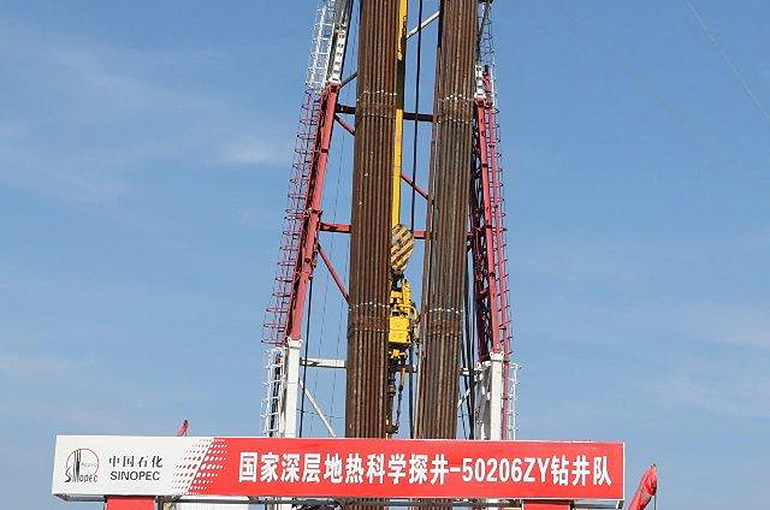 Sinopec Starts Drilling at China's First 5,000-Meter Geothermal Exploration Well
Sinopec Starts Drilling at China's First 5,000-Meter Geothermal Exploration Well(Yicai) Sept. 7 -- China's first 5,000-meter-deep high-temperature geothermal scientific exploration well, built and operated by China Petrochemical Corporation, also known as Sinopec, has begun drilling in Haikou, capital of southern Hainan province.
The drilling of the exploration well will help find the formation mechanism and potential of geothermal resources in the surrounding area, lead the development of geothermal resources exploration and development technology at middle and deep layer levels, and enable the large-scale development of geothermal resources in dry hot rocks, Beijing-based Sinopec said.
Sinopec is China's largest geothermal energy development and utilization company, with a cumulative geothermal heating capacity of over 80 million square meters at the end of last year.
There are three types of geothermal resources: shallow, hydrothermal, and dry hot rock. Most of the geothermal resources developed and used in China are shallow and hydrothermal geothermal resources, as the development of dry hot rock geothermal resources located at a depth of 3.5 to 7.5 kilometers is still in the exploratory phase.
The annual recoverable resources of shallow geothermal energy in 336 major Chinese cities are equivalent to 700 million tons of standard coal, while that of middle and deep geothermal energy are equivalent to over 1.8 billion tons of standard coal, according to this year's annual meeting of the National Geothermal Energy Center of China.
Geothermal energy has great resource potential and good stability and produces zero emissions.
"The Earth's total thermal energy is about 170 million times that of coal reserves, and it is not affected by external factors, such as sunlight, wind speed, and precipitation," Zhang Dawei, dean of the Institute of Urban Underground Space and Energy Studies at Chinese University of Hong Kong, Shenzhen, told Yicai.
Among renewable energy sources, only geothermal energy is not affected by natural conditions such as season, climate, day, and night, and can provide uninterrupted power supply, with an annual utilization rate five to eight times that of solar and wind energy, Zhang noted.
Editor: Futura Costaglione